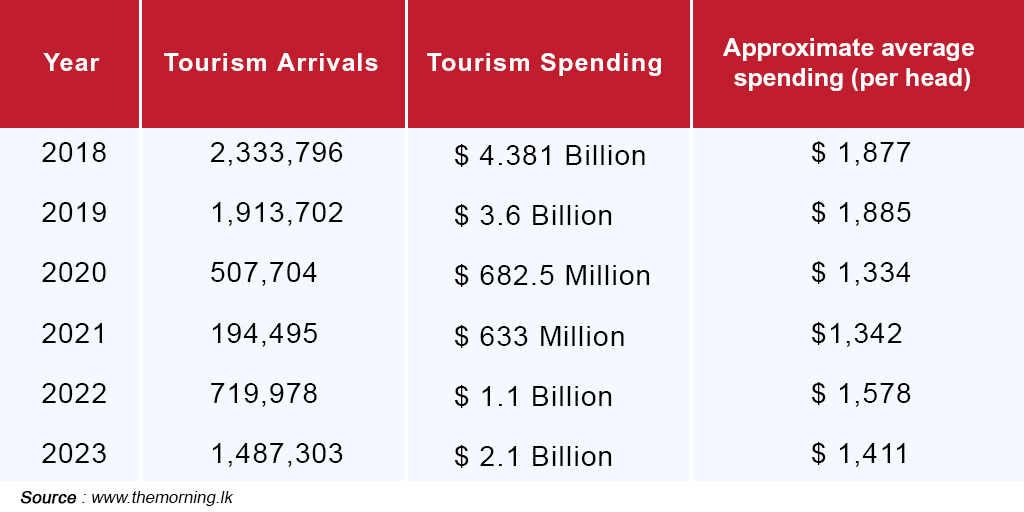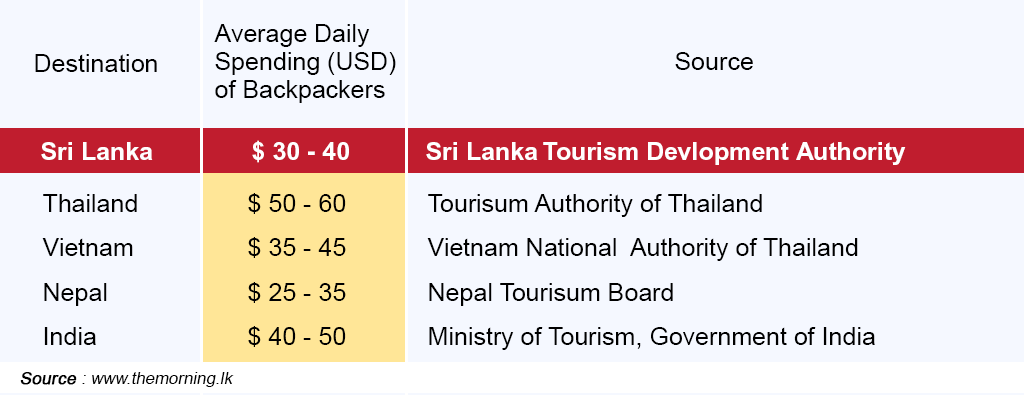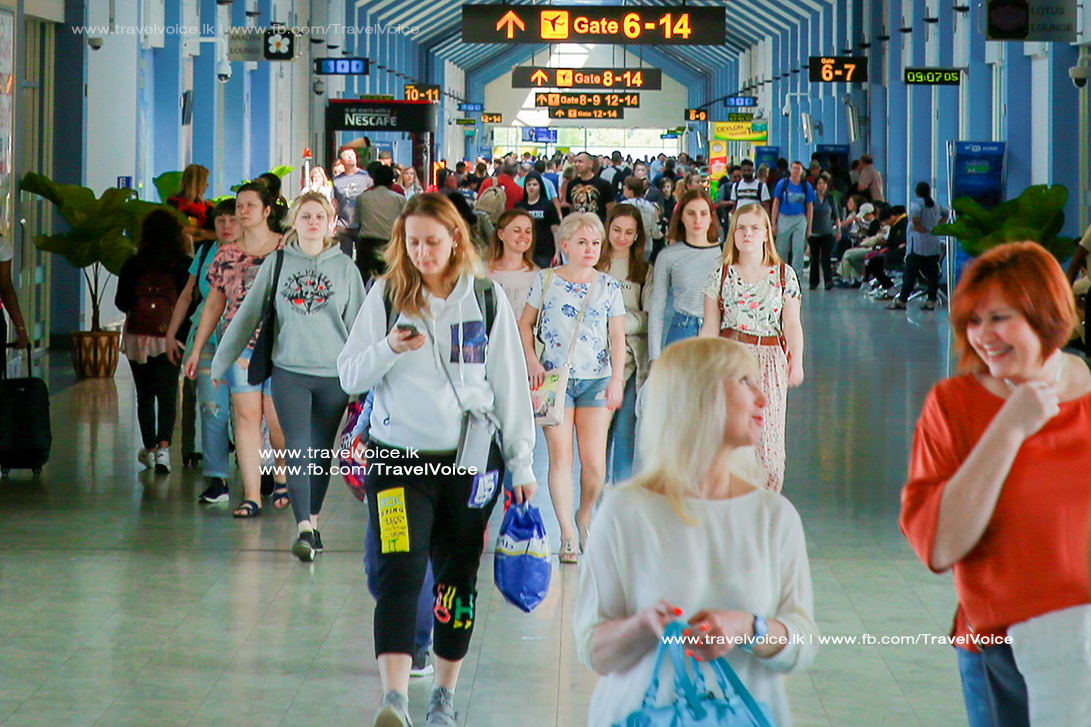Picture pristine blue beaches, luscious hill country, and ancient ruins including World Heritage Sites that beckon tourists from around the world. One might assume that Sri Lanka’s tourism industry is booming given the rapidly-recovering arrival numbers constantly announced in mainstream media, but there is a catch – the Government may not be reaping the rewards it anticipated from tourists in terms of foreign exchange earnings.
According to the Sri Lanka Tourism Development Authority (SLTDA), the average daily expenditure of tourists in Sri Lanka was approximately $ 153 in 2019. This expenditure covered various aspects such as accommodation, meals, transportation, shopping, and leisure activities.
However, in 2020 and 2021, the average daily expenditure of tourists declined significantly due to the impact of the Covid-19 pandemic, which led to a decrease in tourist arrivals to the country.
Recently, Minister of Tourism and Lands Harin Fernando stated that spending per tourist had surged from approximately $ 110 to around $ 180 on average. He said that they planned to further elevate this figure to approximately $ 500 per day by 2029, targeting about 50% of tourist arrivals.
Table 1 depicts the tourism arrivals, annual earnings from tourism, and estimated average spending per head during their stay.
The drop, as shown in the table, is concerning. However, it should be noted that in January 2018, the exchange rate was approximately Rs. 153 per dollar. However, it experienced fluctuations over the course of the past few years, influenced by various factors such as economic conditions, political developments, and market sentiment. At present, the exchange rate is around Rs. 305 per dollar.
Attracting high-end tourists
Speaking to The Sunday Morning Business, The Hotels Association of Sri Lanka (THASL) President M. Shanthikumar emphasised on the need for attracting high-end tourists to Sri Lanka and increasing their spending power. “Sri Lanka has the power to attract high spenders,” he said, highlighting that the majority of tourists currently visiting Sri Lanka were backpackers.
Sri Lanka, indeed, has been a destination mainly for backpackers, providing convenient getaways and cheap options for their stay. However, despite the growing number of backpackers, their impact on the country’s economy remains limited.
Unlike luxury tourists who splurge on accommodations, dining, and activities, backpackers opt for budget-friendly options to spend, such as hostels and street food. Consequently, the overall expenditure during their stay is also significantly lower (Table 2).

Avenues for spending
The influx of budget travellers has led to a proliferation of low-quality accommodation and services catering primarily to price-sensitive tourists. While this may seem beneficial in the short term, it risks tarnishing Sri Lanka’s reputation as a destination offering authentic and high-quality experiences.
Another significant concern is the impact of budget tourism on local economies and communities. While backpackers often seek out inexpensive options, they may inadvertently contribute to the exploitation of local labour and resources. The recent incidents down south are prime examples of this.

Speaking to The Sunday Morning Business, SLTDA Chairman Priantha Fernando stated: “We are carrying out activities to create more avenues for tourists to spend. We are confident in these measures.”
The President’s Media Division (PMD) recently announced that the country had initiated infrastructure development projects and innovative tourism promotion programmes aimed at attracting high-end tourists.
According to the United Nations Development Programme (UNDP), for many years Sri Lanka has primarily attracted tourists who spend less money. Recent efforts to develop niche, high-quality tourism experiences around nature, health, wellness, and adventure have been overshadowed by this long-standing focus on mass, low-spending tourism.
To achieve the Government’s vision for transforming tourism towards more authentic yet lucrative markets, several important steps are needed according to the UNDP.
- Sustainable tourism needs to become a central focus of the country’s tourism plans moving forward.
- Investments should be directed towards upgrading facilities, ensuring compliance with health and safety standards, and improving the skills of the workforce.
- Efforts are needed to create safe and decent jobs in the hospitality sector, with a focus on attracting more women and youth. This involves establishing modern training facilities to produce a skilled workforce.
- Ensuring the safety and security of travellers within the country, especially during times of uncertainty, is crucial.
- Support should be provided to help informal businesses in the tourism industry transition to formal operations, including standardisation and regularisation.
- New and niche markets centred around Sri Lanka’s unique offerings, such as wellness, adventure, nature, local culture, cuisine, and marine-based tourism, should be developed.
- Domestic tourism should be promoted and incentivised to encourage spending within the country.
- Efforts should be made to increase investor confidence and explore new financing mechanisms, such as green and climate financing, to support investments in sustainable practices related to energy, water, waste management, and disaster risk management.








